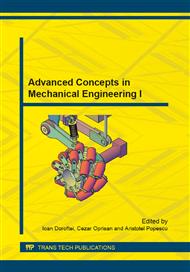p.141
p.147
p.153
p.161
p.167
p.173
p.177
p.183
p.189
Optimizing the Shape and Size of Cruciform Specimens Used for Biaxial Tensile Test
Abstract:
Testing cruciform specimens subjected to biaxial tension is one of the most widely used experimental techniques and more accurate at this time to determine the mechanical properties of materials and to verify the failure theories. This type of experiment allows the continuous monitoring of behavior of materials from the beginning of deformation until fracture under different ratios of forces and directions of the deformation, which transforms it into a very versatile testing method. We have varied the number of parameters and their values in order to achieve a uniform distribution of biaxial state of stresses and strains in the area tested. In theory, any material can be tested by stretching a biaxial cruciform specimen, but must be investigated in what way the shape of the specimen influence the data obtained. In this paper are presented the requirements that must be fulfilled by the samples used for tensile / compression biaxial tests and the design of cruciform specimens through FEA that meet these demands.
Info:
Periodical:
Pages:
167-172
Citation:
Online since:
October 2014
Authors:
Price:
Сopyright:
© 2014 Trans Tech Publications Ltd. All Rights Reserved
Share:
Citation:


